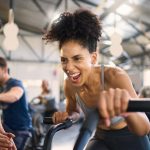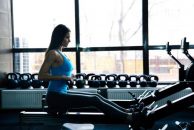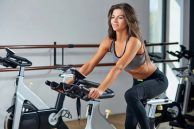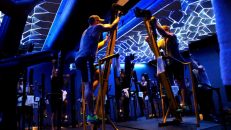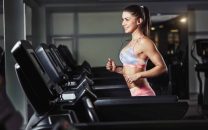Spinning Safely: 7 Injury Prevention Tips for Indoor Cyclists
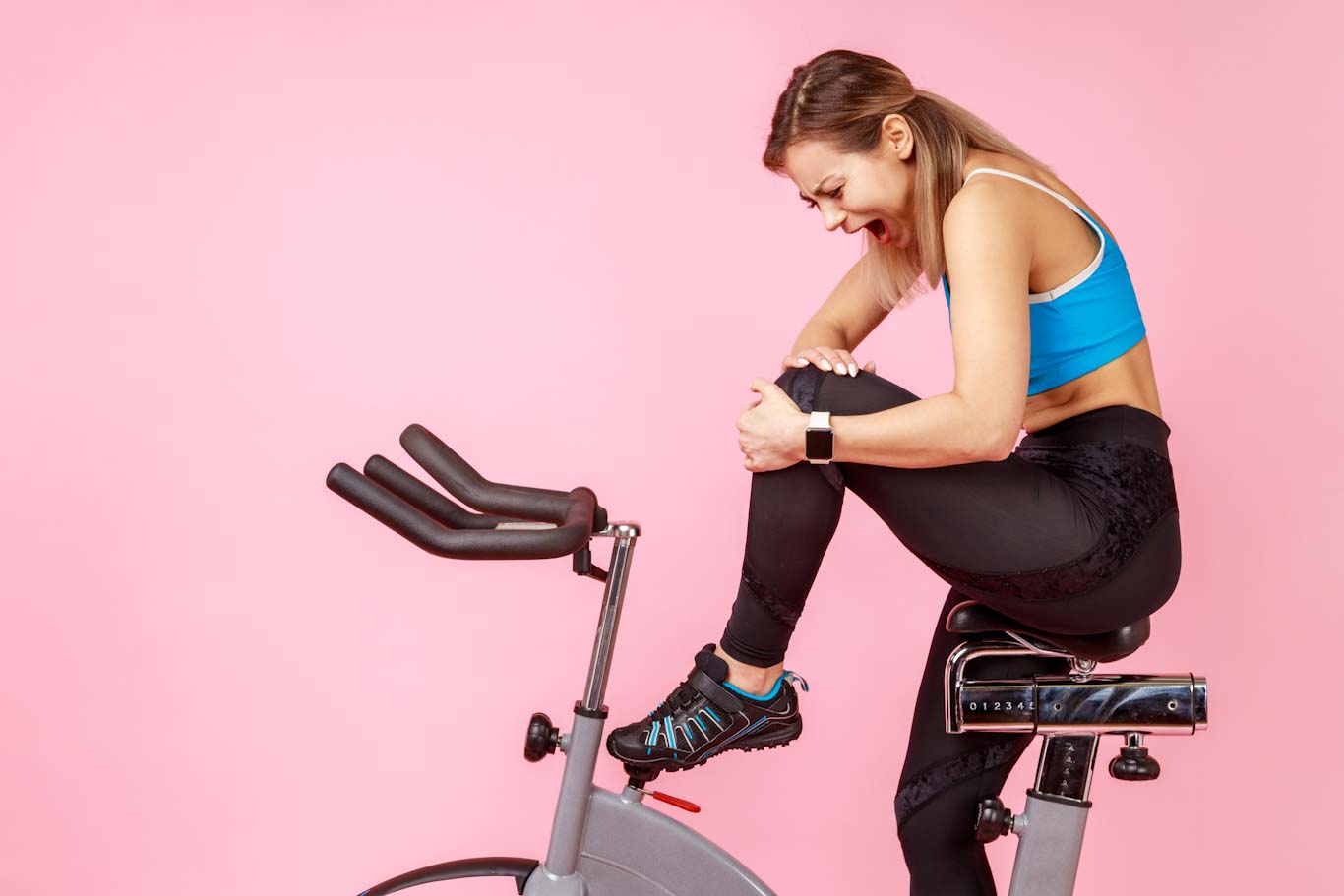
In the ever-growing world of fitness, few workouts rival the exhilaration of indoor cycling, commonly known as spinning. The surge of endorphins, the rhythm of the music, and the intensity of the ride make it an addictive and transformative experience. But as we embark on this journey of intense cardio and strength, it’s crucial to prioritize safety. In this guide, we delve into the realm of injury prevention, arming you with the knowledge to spin safely and confidently.
Understanding Common Indoor Cycling Injuries
Knee Injuries: Protecting Your Pivot Point
The knees bear the brunt of the pedalling action, and improper pedal alignment or excessive tension can lead to knee strain. To safeguard this crucial joint, ensure your knees remain in line with your feet during each pedal stroke. Engage the muscles surrounding the knee to maintain stability and prevent unwanted stress on the joint.
Lower Back Pain: The Importance of Posture
The thrill of spinning can sometimes overshadow our posture. Poor form and incorrect bike setup can result in lower back pain. To counter this, prioritize a neutral spine – maintain a straight back and avoid hunching forward. Adjust your bike’s saddle and handlebar heights to achieve optimal alignment and lumbar support.
Wrist and Hand Discomfort: Gripping Wisely
Gripping the handlebars too tightly or placing excessive weight on your hands can lead to wrist and hand discomfort. Relax your grip and distribute your weight between your hands and core. Ensure your wrists remain in a neutral position to minimize strain. This small adjustment can make a significant difference in your overall comfort.
7 Tips to Prevent Injuries for Indoor Cyclists
1. Proper Bike Setup for Injury Prevention
Bike Sizing and Adjustment: Tailoring to Your Body
Achieving the ideal bike setup is paramount for injury prevention. Adjust the saddle height to ensure a slight bend in your knee at the bottom of the pedal stroke. The handlebar height should provide a comfortable grip without causing strain to your shoulders. Also, adjust the fore/aft position of the saddle for optimal alignment.
Shoe and Pedal Alignment: Finding the Sweet Spot
Correct shoe and pedal alignment are vital to prevent knee strain. Position your cleats so they are aligned with the natural angle of your foot. This alignment ensures smooth pedalling mechanics and minimizes the risk of injury. Experiment with the positioning until you find the sweet spot that suits your body mechanics.
Handlebar and Saddle Alignment: Customized Comfort
Handlebar height and saddle tilt are critical factors in creating a comfortable riding position. A slight upward tilt of the saddle can alleviate pressure on sensitive areas. Handlebar height should encourage an upright posture without straining your back. Customizing these settings ensures a pain-free ride.
2. Mastering Proper Form and Technique
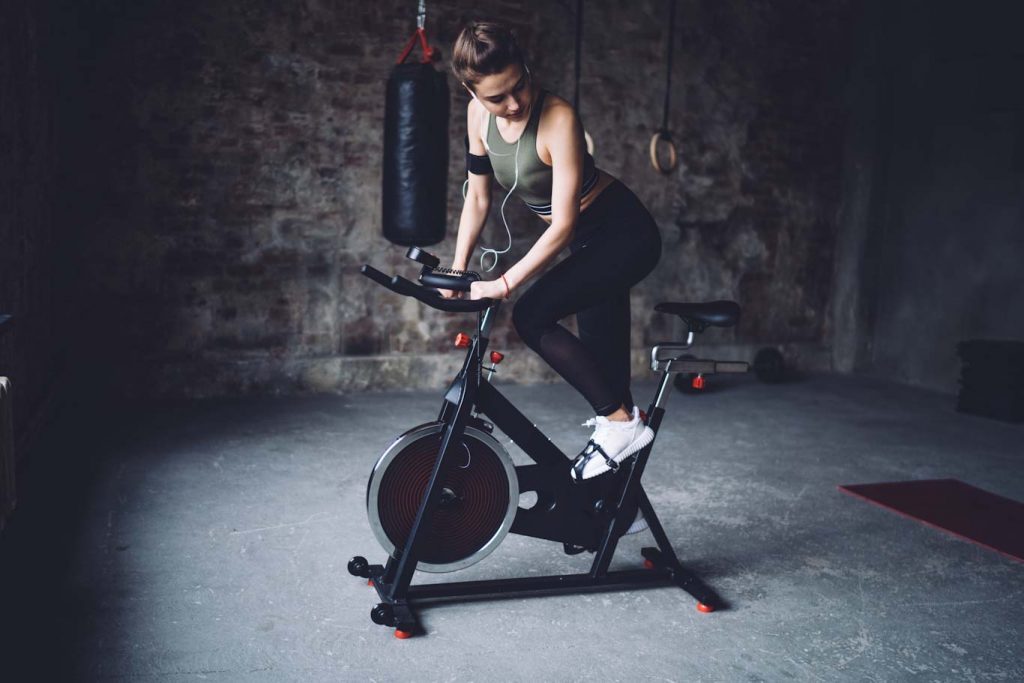
Pedalling Technique: A Full Circle Effort
Efficient pedalling involves engaging different muscle groups throughout the pedal stroke. Focus on pushing down, pulling up, and maintaining a fluid motion. This even distribution of effort minimizes strain on specific muscles and promotes a balanced workout.
Posture and Core Engagement: The Power of Alignment
Your core is your powerhouse during spinning. Maintain a strong core to stabilize your body and enhance posture. Engage your core muscles by pulling your belly button in towards your spine. This not only prevents strain on your lower back but also promotes overall body control.
Breathing and Relaxation: Finding Your Rhythm
In the midst of a challenging spin, don’t forget to breathe. Deep, rhythmic breathing delivers oxygen to your muscles, helping you maintain endurance. Relaxation is equally essential – release tension in your shoulders, neck, and hands to enhance your overall cycling experience.
Related Guide: Pre & Post Indoor Cycling Workout
3. Gradual Progression and Listening to Your Body
Gradual Intensity Increase: Patience is Progress
Avoid the temptation to dive headfirst into high-intensity workouts. Gradually increase the intensity of your rides to prevent overuse injuries. This approach allows your body to adapt, build strength, and reduce the risk of strain.
Recognizing Warning Signs: Prioritizing Self-Care
Listening to your body is non-negotiable. Pain, discomfort, or extreme fatigue are signals that should not be ignored. If any of these warning signs arise, take a step back, rest, and allow your body the time it needs to recover.
4. Warming Up and Cooling Down
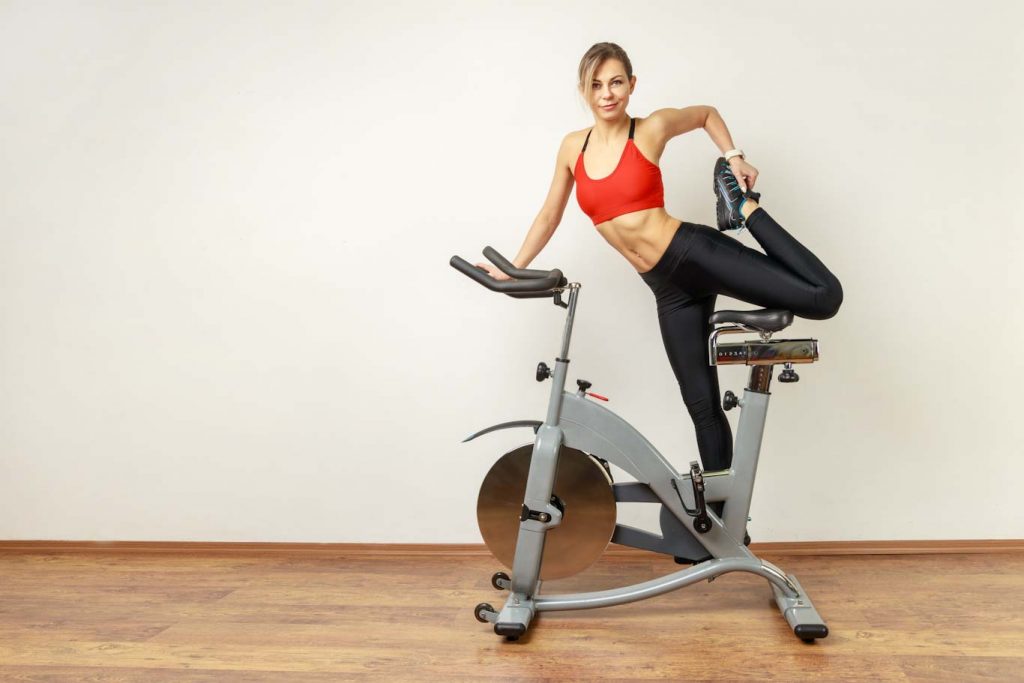
Importance of Warm-up: Preparing Your Muscles
A proper warm-up is your gateway to a safe and effective workout. Spend a few minutes engaging in dynamic stretches and gradually increasing your pedaling intensity. This preps your muscles for the demands of your ride.
Cooling Down for Recovery: The After-Ride Ritual
Post-ride, don’t skip the cool-down. Gently pedal at a slower pace to gradually lower your heart rate. Follow it up with gentle stretching to release tension and improve flexibility. Cooling down aids in reducing muscle soreness and promotes better circulation.
5. Hydration and Nutrition for Injury Prevention
Staying Hydrated: Fueling Your Performance
Indoor cycling can be intense, and proper hydration is essential to sustain your performance. Keep a water bottle handy and take small sips throughout your ride to stay hydrated.
Pre- and Post-Ride Nutrition: Supporting Your Efforts
Provide your body with the necessary nutrients both before and after your ride. A combination of carbohydrates, proteins, and healthy fats supports energy levels, aids in muscle recovery, and ensures optimal performance.
6. Cross-Training and Rest Days
Incorporating Cross-Training: Balanced Fitness
Variety is the spice of fitness. Incorporate cross-training activities to prevent overuse injuries and promote overall fitness. Activities like yoga, strength training, and swimming complement indoor cycling by targeting different muscle groups.
The Role of Rest Days: The Art of Recovery
Rest days are not a sign of weakness; they’re a crucial part of the journey. Your body needs time to recover and repair. Schedule regular rest days to prevent burnout and allow your muscles and joints to rejuvenate.
7. Seeking Professional Guidance
While this guide offers valuable insights, there’s no substitute for expert guidance. Certified indoor cycling instructors or physical therapists can provide personalized advice based on your unique needs and goals. Their expertise can make a significant difference in your injury prevention journey.
Recommended Reading: Best Spin Bikes for Home Use in the UK
Conclusion: Riding Strong and Safe
Indoor cycling is a dynamic and transformative workout that can propel you toward your fitness goals. By embracing proper technique, mastering bike setup, and paying attention to your body’s cues, you can spin your way to success without compromising your safety. Remember, injury prevention is the foundation of a long and fulfilling journey in the world of indoor cycling. Prioritize your well-being, respect your body, and spin confidently toward a stronger, healthier you.
Further reading and references:
- Reasons to Take a Spin Class
- Athletics and Fitness Association of America™ – Indoor Cycling Form
- Indoor Cycling Association – Indoor Cycling Safety


